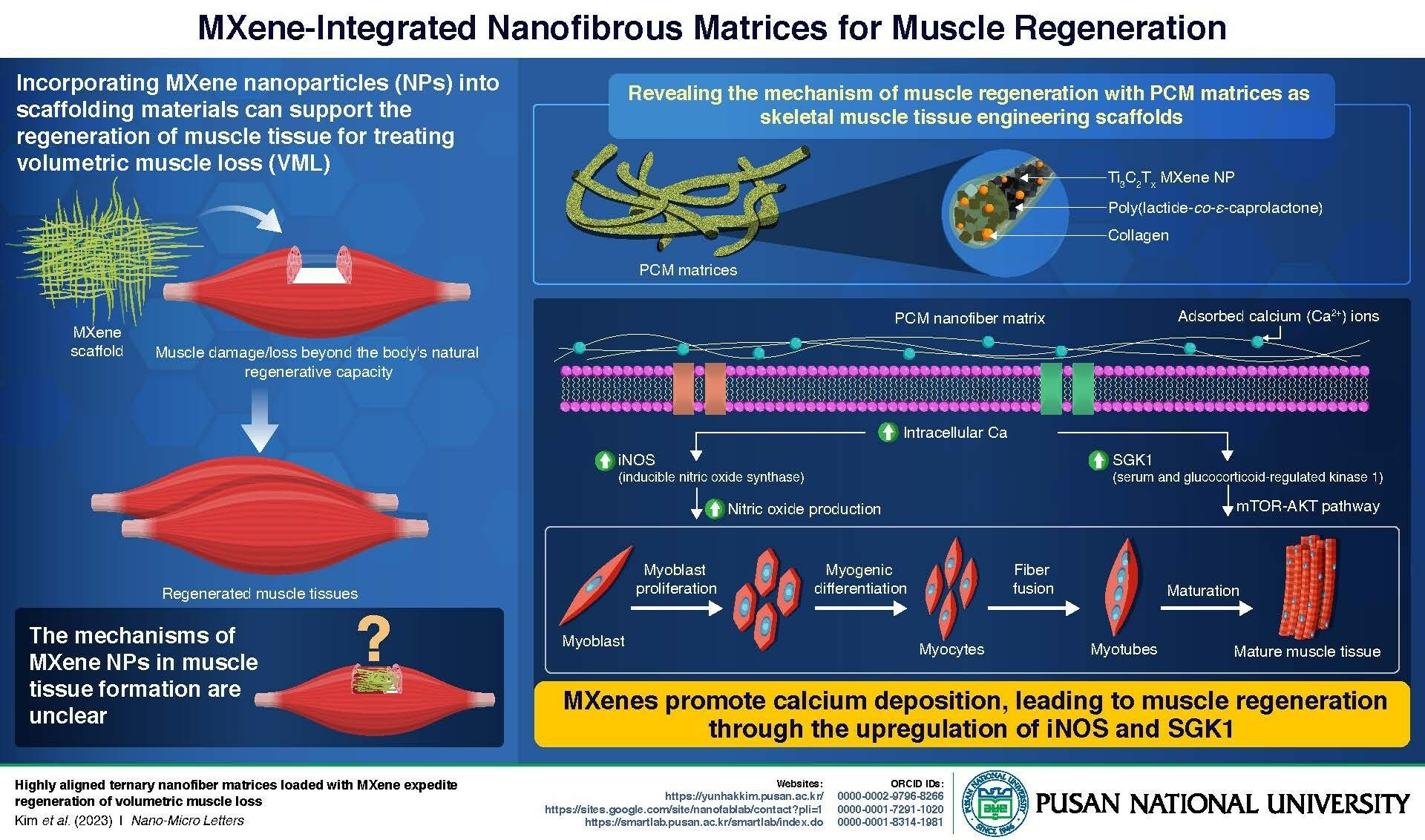Pusan National University Announces Potential Breakthrough for Muscle Regeneration Using Nanotech
According to the university, new nanotech scaffolding can be used to support tissue growth.
Pusan National University

Pusan National University announced a potential breakthrough in muscle regeneration technology. Researchers at the university studied MXene nanoparticles (NP) in an attempt to better understand how these nanoparticles work.
In a press release, the university details how a team of researchers used DNA sequencing on nanofibrous matrices which contained MXene NPs. The results revealed the genes and biological pathways that were activated by the NPs.
This is considered a breakthrough because up until these findings, the specific mechanism these NPs used to promote muscles was unclear to researchers. Prior to this, MXene NPs were only shown in laboratory demonstrations to promote growth.
The team of researchers includes associate professor Yun Hak Kim, professor Suck Won Hong, and professor Dong-Wook Han. Kim is from the Department of Anatomy and the Department of Biomedical Informatics, while Hong and Han are from the Department of Cogno-Mechatronics Engineering.
MXene NPs could potentially be used in place of traditional muscle grafts.
In the press release, Kim said, “This discovery posits a prospective avenue for the utilization of these materials to augment the efficacy of muscle tissue regeneration post-injury or damage.”
According to the findings, MXene NPs promote calcium ion deposition around cells, which then triggers the activation of certain genes. These specific genes produce various proteins while also increasing the production of nitrous oxide. The combined result promotes muscle growth.
Now that the researchers have a better understanding of how MXene NPs work, they say that they have a chance to refine the designs of the scaffolds these NPs are used in to achieve better and more efficient results. Kim believes that this research could lead to significant improvements in muscle injury treatments within five to 10 years.
Source
(Jan. 19, 2024); Pusan National University; Pusan National University's Breakthrough in Muscle Regeneration: Nanotech Scaffolding Supports Tissue Growth; https://www.prnewswire.com/news-releases/pusan-national-universitys-breakthrough-in-muscle-regeneration-nanotech-scaffolding-supports-tissue-growth-302038635.html
Addressing Disparities in Psoriasis Trials: Takeda's Strategies for Inclusivity in Clinical Research
April 14th 2025LaShell Robinson, Head of Global Feasibility and Trial Equity at Takeda, speaks about the company's strategies to engage patients in underrepresented populations in its phase III psoriasis trials.
Beyond the Prescription: Pharma's Role in Digital Health Conversations
April 1st 2025Join us for an insightful conversation with Jennifer Harakal, Head of Regulatory Affairs at Canopy Life Sciences, as we unpack the evolving intersection of social media and healthcare decisions. Discover how pharmaceutical companies can navigate regulatory challenges while meaningfully engaging with consumers in digital spaces. Jennifer shares expert strategies for responsible marketing, working with influencers, and creating educational content that bridges the gap between patients and healthcare providers. A must-listen for pharma marketers looking to build trust and compliance in today's social media landscape.
Pfizer, GSK Gain ACIP Recommendations for RSV and Meningococcal Vaccines
April 18th 2025The Centers for Disease Control and Prevention’s Advisory Committee on Immunization Practices voted to expand access to Pfizer’s respiratory syncytial virus vaccine Abrysvo for high-risk adults in their 50s and voted in favor of GSK’s meningococcal vaccine, Penmenvy, for streamlined adolescent protection.